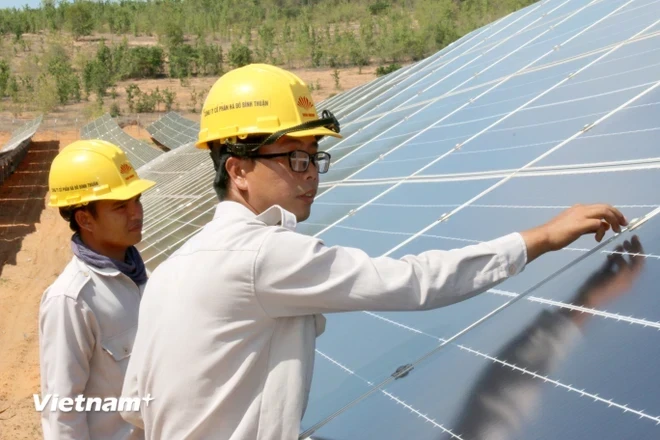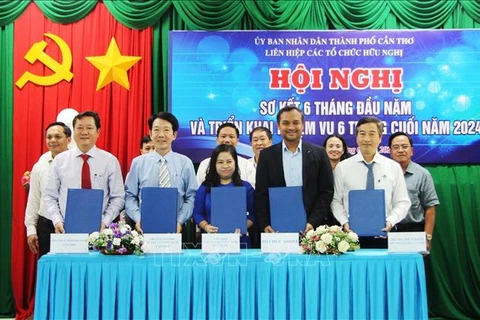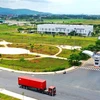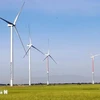
Hanoi (VNA) - Green development, energy transition, and greenhouse gas emission reduction are inevitable, irreversible trends that Vietnam must take part in. They are also an opportunity to develop and restructure the economy in a green, clean and sustainable direction.
However, experts believe that to achieve the net zero emissions goal as well as transform the entire Vietnamese economy towards a greener direction, there are three issues, namely structure and technology of the energy industry, capital attraction and disbursement, and institutions and policy mechanisms. These are the hot buttons for Vietnam in its green energy transition process.
This is also the main content of the workshop themed "Promoting Green Energy Development: Current Status and Implementation Solutions," organised by the Vietnam Institute of Economics in collaboration with the Business and Trade Magazine in Hanoi on August 8.
On October 1, 2021, the Prime Minister issued Decision No. 1658/QD-TTg approving the National Strategy on Green Growth for 2021-2030, with a vision to 2050. The strategy focuses on exploiting and using energy economically and efficiently, increasing the use of renewable and green energy. Vietnam committed to achieving zero net emissions at the 26th United Nations on Climate Change (COP26) and announced the country's Nationally Determined Contribution (NDC). In addition, Vietnam has also joined the Just Energy Transition Partnership (JETP).
To formalise the above strategies and commitments, on May 15, 2023, the Prime Minister issued Decision No. 500/QD-TTg, on approving the National Power Development Plan for 2021-2030, with a vision to 2050 (the Power Plan VIII), which prioritises strong development of renewable energy sources for electricity production, expected to reach about 30.9-39.2% by 2030, and 67.5-71.5% by 2050.
According to Pham Anh Tuan, Deputy Director of the Vietnam Institute of Economics, it is not easy for the country to shift to renewable energy, because energy supply systems require huge investments. In addition, there are many limitations on the technology of green energy production and storage that affect the stable energy supply.
He cited Vietnam Energy Association’s statistics showing that the investment needed for the electricity industry in 2021-2030 is up to more than 130 billion USD, but about 30 billion USD was met over the past three years. Thus, in the remaining six years, more than 100 billion USD is needed to invest in the electricity industry.
Meanwhile, the power system infrastructure has yet to meet the rapid development of the renewable energy sector. It lacks flexible resources and reliable energy storage systems, power generation, and transformation equipment. Procuring these is likely to cause an increase in electricity production costs. LNG power projects also encounter many obstacles in policies that govern the sector.
“We also lack legal regulations for offshore wind power development. Hydrogen fuel technology is still in the experimental stage, not yet marketed," said Tuan.

In recent years, renewable energy in Vietnam has seen strong growth and attracted investment from the private and foreign sectors. In the central and southern coastal provinces, the total FDI investment is over 5.1 billion USD in 2020, four times higher than the previous year. By the end of 2020, the total installed capacity of renewable energy sources in Vietnam is estimated to reach about 38.4 GW, mostly from hydropower and solar power.
Ha Huy Ngoc from the Vietnam Institute of Economics cited statistics from the BCG organisation that by 2050, the domestic demand for clean hydrogen gas will reach about 25-40 million tonnes. In the context of full localisation, the clean hydrogen ecosystem has the potential to generate significant socio-economic benefits. It could contribute an additional 40-45 billion USD to GDP and create approximately 40,000-50,000 jobs from production, transport and distribution of clean hydrogen.
He recommended adopting a long-term comprehensive approach for the development of the entire hydrogen value chain, from production to finished use, with an aim of fully exploiting the benefits of clean hydrogen.
According to Associate Professor Dr. Nguyen Thuong Lang, Senior Lecturer at National Economics University’s Institute of International Trade and Economics, Vietnam has many policies related to green hydrogen, such as the Green Growth Strategy, Energy Development Strategy, and Power Plan VIII.
He said it is necessary to have specific policies and a system of regulatory mechanisms, policies, and standards for operations of businesses in the field. He suggested learning best practices from other more developed countries, and adapting those for application in Vietnam./.






















